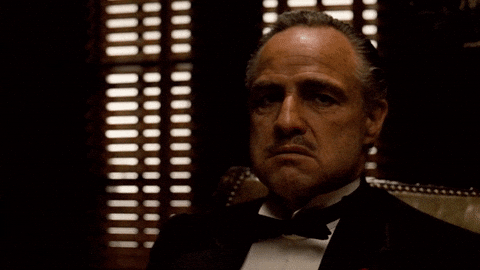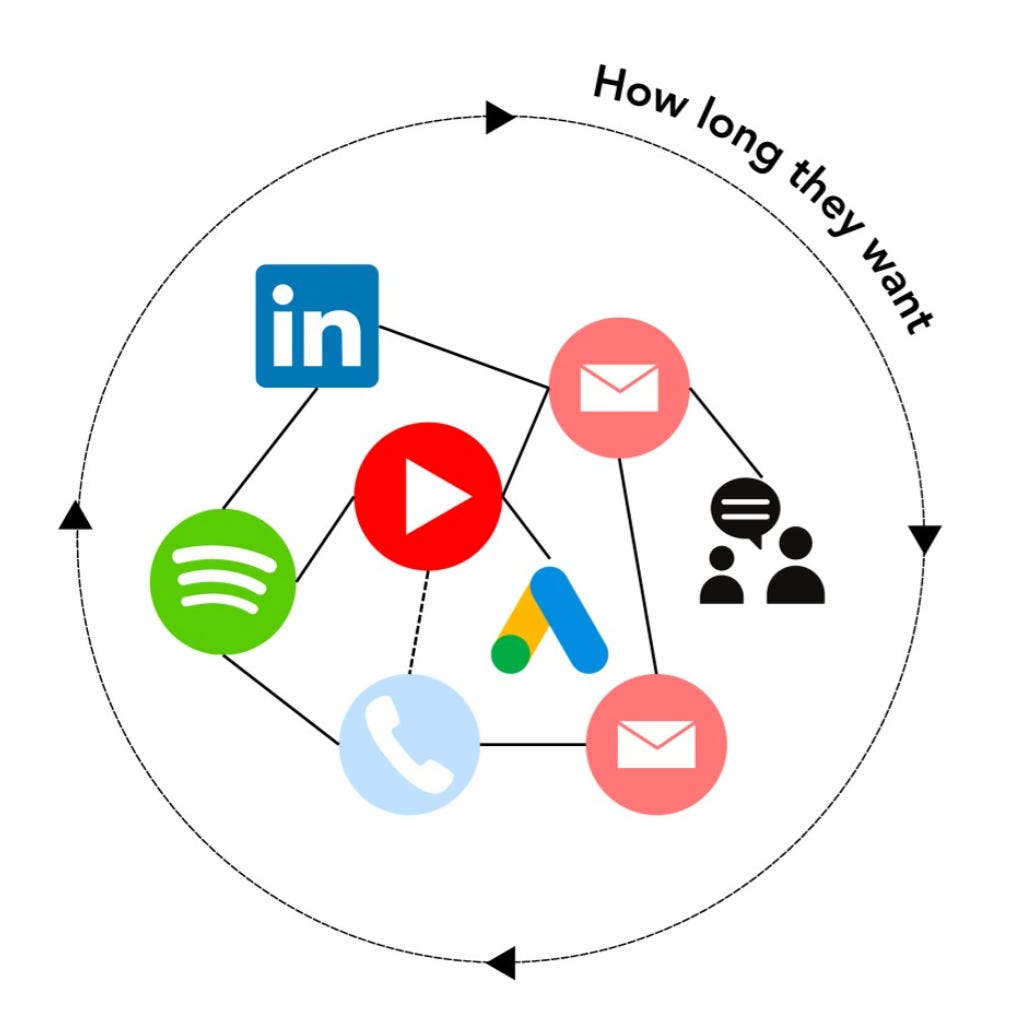10 fundamental marketing rules I still use in 2025
Building winning offers, nailing positioning, and more…
Hello again! 👋
Last week, I uncovered 10 fundamental B2B marketing rules that have been vital to my success.
If you missed the first part, catch up here:
Today, we’re finishing the playbook.
These next 10 rules will forever change how you approach your positioning, messaging, and marketing.
Let’s get into it.
Want to grow an audience, build a brand, and attract clients with content? Here are 2 ways I can help you:
Learn my Authority-first framework to create your content strategy on LinkedIn™, YouTube, and Newsletter with 5 modules (video lessons, tutorials, templates, and notion workspace).
Join my 5-week LinkedIn™ content creation bootcamp. You’ll learn to ideate, write, and design content that drives impressions, profile visits, and leads. It includes masterclasses, tailored content strategy, and 1:1 review of your content.
Rule #11: Research your audience
Never make the mistake of thinking, “I know my audience”.
Markets change. Buyers’ needs change. Messaging that worked last year will often lose impact this year.
Audience research is not a one-time exercise.
You should constantly be:
Running customer interviews
Analyzing buyer feedback
Monitoring the industry
Testing your marketing assumptions
The deeper your understanding of your audience’s world, the more successful your marketing becomes.
Rule #12: Identify and solve a PURE problem
A good offer solves a real problem.
But not every problem is worth solving.
The problems that create the most pipeline and sales are:
Painful: It genuinely hurts their business
Urgent: They need it fixed now
Recognized: They know they have this problem
Expensive: The cost of not fixing it is high
This is what separates winning offers from losers.
If it’s a PURE problem, it’s a problem your prospect is willing to pay nearly anything to solve right now.
(And guess where you find these PURE problems? You refer to rule #11.)
Rule #13: Design a great and unique offer
Every market gets crowded. Competitors all offer similar features, benefits, and claims.
Among all your competitors… Why should your prospects choose you?
The quality of your offer determines whether you win the deal or lose to the competition — regardless of how good the rest of your marketing is.
To design a great and unique offer, think about how you can make each of the following elements the best in your market:
As the Godfather said…
Make them an offer they can’t refuse.
Rule #14: Position your offer as the best solution
Positioning is your key to showing HOW and WHY your offer is the best fit.
Poor positioning creates weak messaging, confused prospects, and longer sales cycles.
Strong positioning makes your offer the obvious choice for your target market.
Your positioning should answer:
Who your product is for
What problem it solves
Why it’s better than alternatives (including doing nothing)
Rule #15: Develop a messaging strategy to convince
The purpose of your messaging is not to make your company look good.
It’s to convey that your solution is the bridge to your prospect’s dream outcome.
To do this, use the following framework:
Rule #16: Repeat the same messages for positioning
Decide how you want to be perceived.
Then repeat that message… over and over and over again.
This turns your ‘desired positioning’ into your ‘perceived positioning’:
The only way to own a position in your market’s mind is to consistently repeat your message to them.
Rule #17: Planning and prioritization is crucial
B2B marketing is all about organizing your backlog of experiments and staying disciplined.
Effective planning involves:
Setting clear marketing objectives
Prioritizing high-impact activities
Creating a structured experiment process
Regularly reviewing and adjusting strategies
Without ruthless prioritization, you’ll end up focused on the wrong things.
Rule #18: Every action has a delayed impact
B2B marketing is not an instant process.
There’s a lag between your effort and your results.
What you do today will generate results in 3 months.
If you launch an ad campaign or activate a new marketing platform, commit to it for at least 3-6 months.
Execute consistently and you’ll be surprised by how the results compound down the line.
Rule #19: Understand how your prospects buy
Don’t sell the way you want. Sell the way your prospects buy.
Every ICP has their own buying process:
Here are some things to consider:
Is there a single decision maker or a committee?
How is the budget approved?
What objections come up?
What proof do they need?
The better you understand how your prospects buy, the smoother your sales process.
Rule #20: Don’t try to ‘funnel’ — instead, multiply touchpoints
There is no such thing as the ‘perfect funnel’.
In reality, prospects…
bounce between channels
revisit content
disappear for months
and resurface when their priorities shift.
You cannot force linear progress on them.
Which is why instead you should multiply your touchpoints:
Be present on multiple channels
Create different types of content
Make it easy find more information from you
That way, when your prospect is ready to buy, you’ll be ‘top of mind’.
The rules are simple… but most ignore them
Most B2B marketing problems stem from breaking these rules:
Skipping audience research
Selling too hard, too early
Chasing trends instead of building systems
Giving up before the results kick in
The most successful marketers aren’t the most creative. They’re the ones who execute the fundamentals relentlessly.
Learn more about building a winning B2B marketing strategy
In my course, 'Authority-First Content', I teach you how to create content that positions you as an expert and drives prospects down through the 4 buying stages.
I give you the exact frameworks, templates, and processes I used to create content and bootstrap my business from $0 to $1M in just 14 months, and build an audience of over 150,000 people across platforms.
On top of that, each week I spend an hour reviewing my students’ content on a live call — you can swing by and I’ll give you feedback on your content!
Watch the video below to learn more about the program:
Alright that’s the end of this newsletter 👋 I hope it helped you! Thanks for reading :)























This is the first time I head about a PURE problem, and it expresses everything I'm looking in a new application or job. Thank you so much Pierre.
Pierre absolutely nailed it. Especially Rule #12 PURE problems are the bedrock of a high-converting offer. I’ve seen campaigns flop not because the execution was off, but because the underlying problem wasn’t painful or urgent enough to drive action.